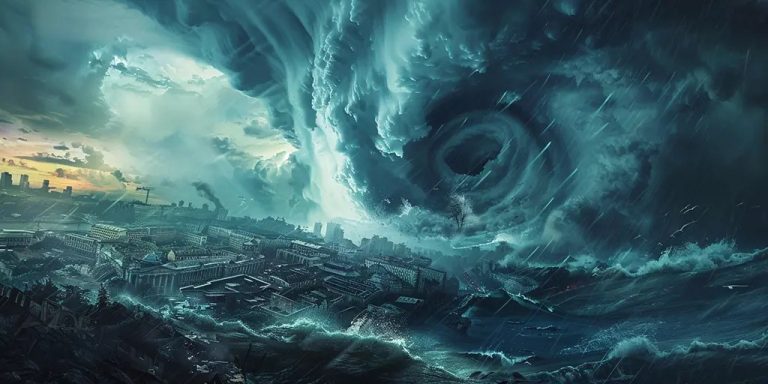
A recent article in seattle timesTitled “From water damage to deadly heat: AP photographers capture climate change in 2024,” it presents a series of photos depicting various natural disasters and extreme weather events since 2024 and attributing them to climate change change. While the Associated Press (AP) image is compelling, it is a false narrative because the article does not distinguish between short-term weather events and long-term climate trends. Instead, the article conflates two completely separate natural processes.
Climate Overview, The World Meteorological Organization (WMO) defines climate as “the average weather conditions at a specific location over an extended period of time (usually more than 30 years).” In contrast, weather refers to short-term atmospheric conditions. Therefore, individual weather events, no matter how extreme, do not constitute climate change.
Extreme weather events have occurred throughout history and have nothing to do with human-caused climate change. For example, the Dust Bowl of the 1930s and the Great Snowstorm of 1888 were catastrophic events that preceded large amounts of industrial carbon dioxide emissions. Attributing modern extreme weather solely to climate change ignores the natural variability inherent in Earth's climate system.
Media coverage (including powerful photos by the Associated Press) and technological advances tend to amplify growing perceptions of extreme weather. For example in climate realism It has been pointed out that some media now treat computer model forecasts as the same as actual weather data. Additionally, the proliferation of instant messaging tools and 24/7 news cycles has led to more immediate and widespread coverage of weather events, creating the false impression of increasing frequency and severity, even when statistics do not show worsening trends.
Chapter 11 of the Intergovernmental Panel on Climate Change (IPCC) AR6 report concludes that most changes in the frequency and intensity of severe weather events have not yet been detected and cannot be attributed to anthropogenic climate change. Real-world data shows that there has been no significant increase in droughts, heat waves, floods, tropical cyclones, hurricanes or tornadoes over the past 100 years.
Despite claims that climate change is linked to increased deaths from extreme weather, data shows a significant decline in such deaths. Human mortality from weather-related disasters such as floods, droughts, storms, wildfires and extreme temperatures has declined by more than 99% over the past 100 years. In the 1920s, an average of about 485,000 people died each year due to weather disasters. By 2020, that number had dropped to about 7,790.
Although these photos appear in seattle times The article is evocative, so it is important to clearly understand the difference between the two and keep in mind the facts about trends in extreme weather events when discussing weather and climate topics. Attributing individual weather events directly to climate change without considering historical context and natural variations does readers a disservice. Yet given that the AP has received millions of dollars in grants from well-funded climate activist foundations to write dire stories about climate change, the agency and those who publish its stories and photos don’t seem to care at all about what they say Is the science about climate change and weather trends true?
Originally published in ClimateREALISM
Relevant
Learn more from Watts Up With That?
Subscribe to have the latest posts delivered to your email.
